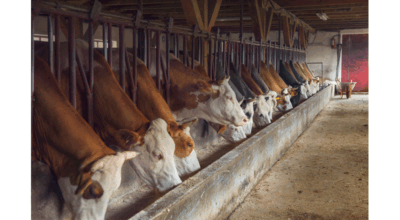Cotton plants vunerable to thrips damage
Published 11:04 am Wednesday, May 27, 2015
by Austin Brown
Fast and Furious
I am not referring to the popular street-racing movie series, but this title seems fitting for most of our planting seasons. Early May conditions have made up for some of the cooler weather we experienced in the latter part of April. Warmer temperatures have created good planting conditions for cotton and peanuts, while promoting corn growth. As I write this the weather man has good chances of rain in the 5-day forecast, which I hope holds true to promote the growth and development of our crops.
Stay tuned for more information!
Thrips
During the time of seedling establishment cotton plants are investing a good deal of energy into root development, though above-ground foliage growth rates are slower. At this point in the season cotton plants are vulnerable to thrips damage. In the Virginia Cotton Production Guide, Dr. Ames Herbert notes that seed treatments provide good thrips control, but a foliar treatment may be needed to provide season-long control. There is no formal threshold for thrips based on insect numbers or plant injury. Treatment is thought to be justified if the following conditions are met: 1) thrips injury is common, 2) 10 percent or more plants show extensive bud damage, 3) immature thrips can be easily found, and 4) plant growth is poor. Foliar control options are listed in the 2015 Virginia Cotton Production Guide found at http://pubs.ext.vt.edu/AREC/AREC-124/AREC-124-pdf.pdf , or you can pick up a copy in our office.
On the same note, below and italicized, is an excerpt from a recent article wrote by Dr. Dominic Reisig, associate professor and Extension specialist of Entomology-N.C. State, concerning thrips control in North Carolina cotton. The full article can be accessed at http://cotton.ces.ncsu.edu/2015/05/should-you-spray-for-cotton-thrips/.
What is the growth stage of the cotton? I cannot stress the importance of this point. Cotton is most susceptible by far before the two-leaf stage. Cotton will take a yield hit up to the five-leaf stage, but sprays at the four and five-leaf stage are typically for revenge, rather than yield. You can tank mix your insecticide with a post herbicide application. The decision you will likely make is whether to be timely for the weeds or the thrips.
When did you plant? On average, cotton planted after the 17 of May is safe from thrips. The earlier you plant, the more likely you are to suffer from thrips. This varies from year to year, of course. Last year, cotton planted mid-May was hammered by thrips. This is because the two most critical factors for thrips injury in cotton are the “thrips flight” and how fast the cotton grows (cooler conditions mean slower grow off for the cotton).
Last year’s thrips flight just happened to be timed so that our cotton planted during mid-May was at severe risk. Both weather and the thrips flight are unpredictable at this time, although a model is in development to predict risk to cotton.
What is your insecticidal seed treatment? Acceleron I, FI, N, NPV, etc., as well as Aeris and Gaucho are imidacloprid alone or in combination with clothianidin. These seed treatments are far and away what have been offered on our seed this year. A little seed will be treated with Avicta or Cruiser, which is thiamethoxam.Tobacco thrips are now resistant to neonicotinoid insecticides in our state (North Carolina), although the resistance levels in 2014 varied among geography. In general, although there is imidacloprid resistance out there, field performance of this chemical seems to be superior to thiamethoxam.
Bottom line, if you only have thiamethoxam seed treatment, spray insecticide at the one leaf stage. If you have imidacloprid-treated seed, keep an eye out for how it is performing.
Find us on Facebook
A Facebook page for the Southampton County Cooperative Extension Office has recently been created. The name of the page is “Southampton County Office of Virginia Cooperative Extension,” and it can be accessed at https://www.facebook.com/SouthamptonExtension.
In the short time since the page was created it has already received nearly 100 likes, and we look forward to many more.
If you fool with social media at all I would urge you to like the page to stay up to date with meetings, agricultural research endeavors, and other forms of news you can use from our office.
Pesticide Container Recycling
The pesticide container recycling program for Southampton is one of the largest in the state in terms of the number of containers recycled. We at the extension office want to thank you for making this possible, and hope that you continue to recycle your pesticide containers with us this year. Contact Austin Brown at 757-653-2572 to set up a time to bring your rinsed containers, with removed labels for collection at the Fairgrounds. Last year participants received Visa Gift cards for their efforts, and I urge all to participate.
Upcoming events
May 30: Southeast District 4-H Qualifying Horse Show, Airfield 4-H Center
June 4: Early Summer Row Crops Tour, Tidewater AREC
June 16: Small Farm Berry & Vegetable Field Day, VSU Randolph Farm
Austin Brown is the Extension Agent, ANR of the Virginia Cooperative Extension for Southampton County, 21300 Plank Road, Courtland. You may contact him at 653-2572; fax at 653-2849 or abbrown3@vt.edu.





